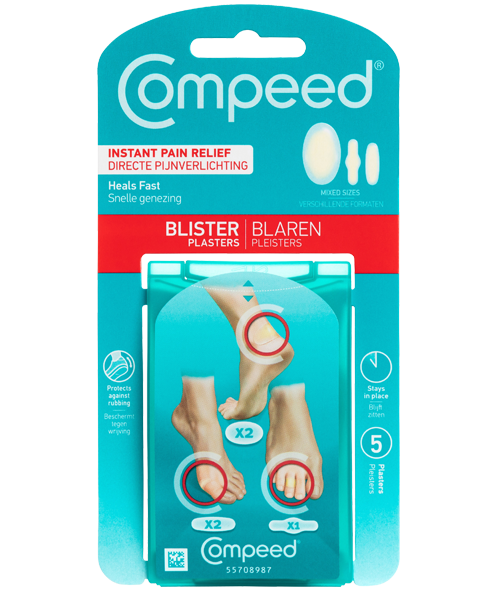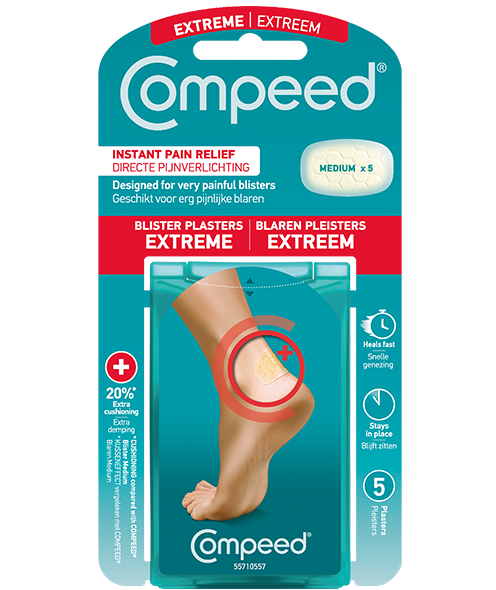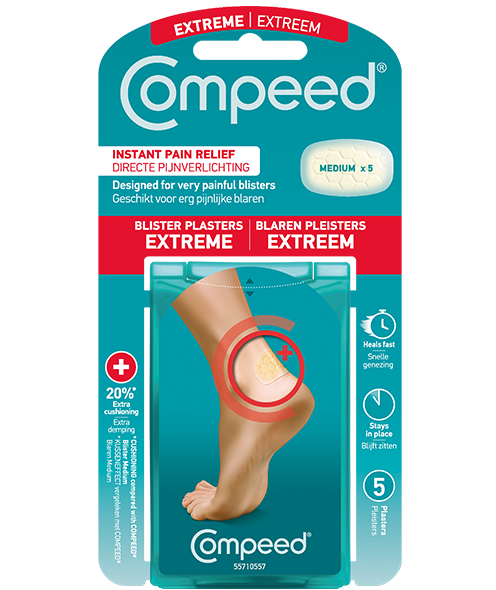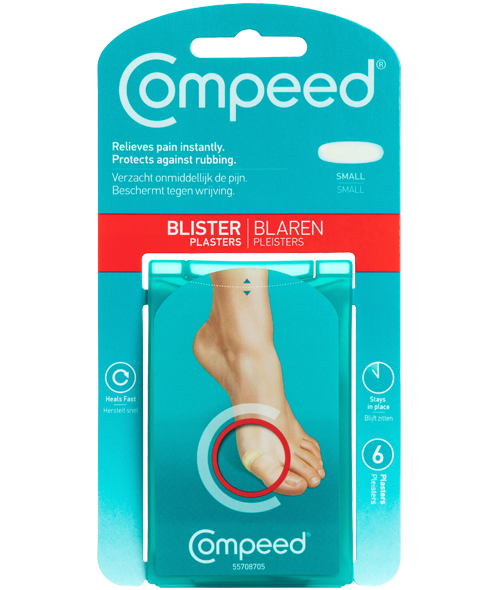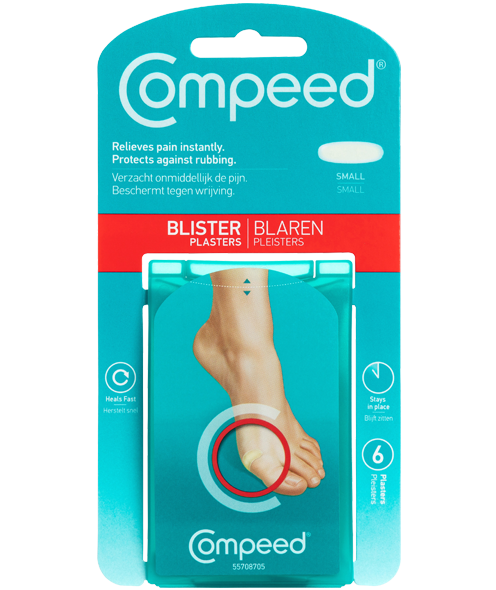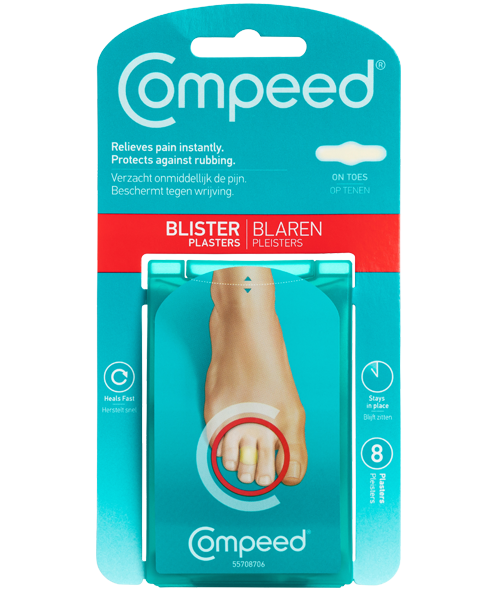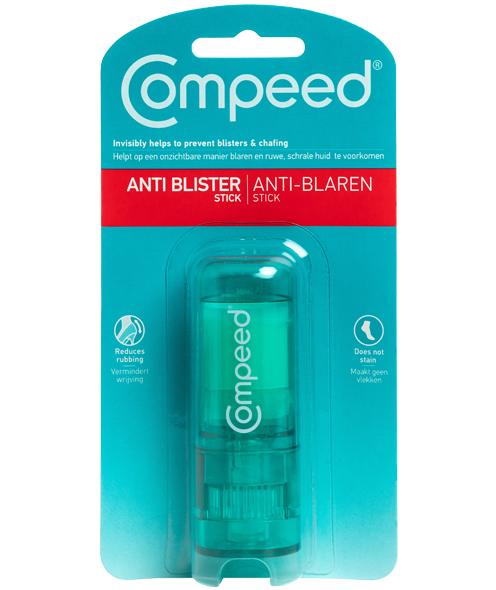Blisters often heal on their own without treatment. New skin will form underneath the affected area and the fluid is simply reabsorbed. The fluid-filled blister keeps the underlying skin clean, which prevents infection and promotes healing. Applying a cold or ice pack may temporarily help reduce swelling and discomfort. However, blisters can often be very painful so treating with a specialist blister plaster like COMPEED®, can help because the cushioning relieves the pressure which reduces the pain.

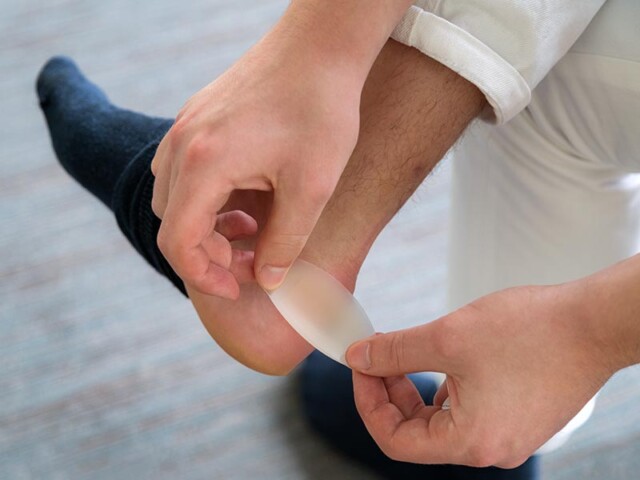
The primary goals of treatment should be to prevent expansion of the lesion, reduce discomfort, promote healing, and prevent infection. COMPEED® specialist blister plaster helps to create the optimal healing environment by absorbing excess fluid, helping to accelerate the body’s natural wound healing process.
The main objective is to keep the blister intact for as long as possible because the skin provides natural protection against infection. However, if pain persists or infection is suspected, a doctor should be consulted.
Identify your blister stage
The first thing you’ll need to do is to identify which stage your blister is at. Take a close look at your blister roof. Is it intact, torn or de-roofed?
If it is intact: In order to prevent further damage, you will need to reduce friction or rubbing on the blister. Gently clean the area and apply a plaster. Apply a specialist blister plaster rather than a regular plaster. A specialist blister plaster like Compeed will protect your blister because it securely seals the edge of the plaster to the skin which helps prevent painful rubbing. You will need to choose the right size of plaster and depending where your blister is located (toe, heel etc) you can also choose specially shaped plasters. Specialist blister plasters such as COMPEED®’s hydrocolloid gel-based plasters will provide additional cushioning and thus, in addition to providing pain relief, will effectively isolate the blister from the source of friction.

If your blister is torn or de-roofed: Your blister will need an antiseptic to prevent infection. If you don’t have access to an antiseptic, at least rinse your blister with saline (salty water) or clean running water. Once this is done, the best course of action is to cover the drained blister with a clean plaster Hydrocolloid plasters such as COMPEED® are particularly well-suited for this as they will provide you with additional cushioning, thus alleviating pain in this highly sensitive area. They will create a protective and moist environment which will allow for faster healing of the blister compared to regular plasters. COMPEED® Blister plasters interact with your exposed blister base to stimulate healing from the outside-in and furthermore, they are cushioned and waterproof, giving them definite advantages over regular plasters.
How often should you change your plasters?
If you are using regular plasters, they need to be changed when they are visibly soiled with blister fluids, dirt or water from the environment (eg: showering, rain, etc). Depending on many factors, you may need to change your plaster anywhere between every hour to once a day. On the other hand, hydrocolloid blister plasters, such as those of the COMPEED® Blister range, do not usually need to be changed.
For de-roofed blisters, specialist blister plasters like COMPEED® only need to be changed when it starts to peel off, or when the white bubble, formed by the blister fluids underneath the dressing, reaches the edge of your plaster. It is perfectly fine to leave a hydrocolloid plaster on for several days. For intact (unbroken skin) blisters, COMPEED® stays in place until the plaster edges start to lift. They can stay in place for several days. Do not be tempted to remove them earlier to allow the blister time to heal as you risk damaging the healing skin.
Should you drain/pop a blister?
You don’t have to pop a blister for it to heal. However, if a blister is large, painful or likely to be further irritated, it could be better to drain it in order to relieve pain or prevent accidental tearing of the roof. It is important to clean with wound with antiseptic or saltwater to avoid infection. Once cleaned, using a COMPEED® Blister plaster will help to seal the wound to prevent the risk of further infection and help speed up the healing process.
If you are concerned regarding possible infection, please consult a doctor. The signs of infection to look out for are:
- Pus: yellowish and thicker than normal blister fluid;
- Increased pain, swelling, redness, warmth;
- Red streaks extending from the blister (seek medical attention).






